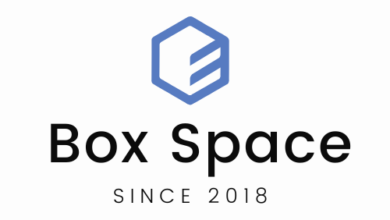Consumers and Craft Beer Packaging Have a Symbiotic Relationship 2023

Chuyên trang cung cấp kiến thức công nghệ & Kỹ thuật chuyên ngành đóng gói, bao bì, giải pháp Logistics, vận chuyển (Thiết bị đóng gói, vật liệu tiêu hao, nguyên liệu nghành bao bì, đóng gói tự động hay bán tự động được thiết kế, sản xuất để hỗ trợ cho quá trình sản xuất và vận chuyển.
Consumers and Craft Beer Packaging Have a Symbiotic Relationship, cập nhật nội dung mới nhất năm 2024
In a 31 gal. barrel of craft beer there are potentially 250-16 oz. cans of beer with labels explaining the attributes of the beer. The trick then becomes making sure the messaging sells the beer! Therein lies the science behind label designs.
A Label is the information on the packaging designed to motivate trial, purchase and identify a brand.
“If it doesn’t sell, it isn’t creative,” said David Ogilvy. Ogilvy was a famous advertising executive, from London who moved to Manhattan. He was a strong proponent of using research to minimize risk in the sales process. Labels, as a sales tool for craft beer, is a hotbed of opportunity for pushing the boundaries of creativity in labels, after all, labels do seem to push the boundaries of design. “To get the results and sales that you’re after, you must stand out, be unique, and present creatively,” explains Kreative Agency.
Labels are required by law, so the white space on a label, after legal requirements are met, might be approached as a free advertising canvas that, if done creatively, will drive sales. Yes, taproom designs (when focused on look and feel) do drive sales and brand information, but the taproom is a single destination, labels are more ubiquitous (grocery stores, events, restaurants, Total Wine… ).
Let’s look at effective label advertising based upon parameters of sound research results. We often say we would rather be lucky than smart, but the reality is, luck is not a reliable factor in generating trials and sales.
Understanding the consumer is not solely about market demographic research, it is about generating trials, conversions and loyalty. Competition and growing a brewery have a lot to do with brand awareness and getting the consumer to try a beer. Some recent research reported on by The Packaging School, shows that 65% of shoppers for craft beer expect to try new beers and part of the new beer trial experience is driven by the label.
Interestingly, biometric research versus qualitative surveys indicates, consumers are mostly unaware of what drives their decisions to buy a product. Much of what drives a buy decision is dictated by our sub-conscious experiences. A decision to buy a new craft beer is often made within a split-second of seeing the beer label on a shelf, as a single can or in a multi-pack.
Based upon research conducted on craft beer marketing presented at the 2020 Craft Beer Conference reported in Package InSight and CODO Design, label designs do change over time as consumer tastes, attitudes and styles change. However, we see that most legacy beer brands do not change label designs because of branding considerations and historic brand recognition.
Even the wine industry is now rethinking the importance of labels in the psychology of selling wine. One example is offered by David Schuemann of CF Napa Brand and Design. “We are in a Millennial-driven market and there’s been a movement (in labels) toward more modernity and the kind of avant-garde visual cues you associate with U.S. wines; not so much with European wines.”
If you look at labels today in craft beer they run the gambit-Dark images or even bizarre characters, minimalist graphics, splashy, pop art, use of photography, characters, flippant, etc.; there seems not to be a rule book for label designs. For example, compare two craft beer labels, the first I define as being very austere (Pliny the Elder-a Russian River Brewing IPA), the second is a stylized avant-garde label ($60 Nachos-produced by Hoof Hearted Brewing), they are polar-opposites in design philosophy, yet both are successful.
Whatever approach a brewery takes relative to packaging research, minimizing risk in the sales process mostly involves surveys, focus groups, and biometric results. Using digitally produced test sample labels, printed on self-adhesive material, then applied to a can, can constitute the beginnings of research.
Biometric research is a little more involved but does add a depth to the research effort that is beneficial.
A feature of the biometric study by Package InSight about craft beers was to define how eye movements can show which beer labels resonate (positively and negatively) with consumers. But the real objective is to get the consumer to pick up the container and read the story about the beer. Some research shows that if a consumer handles the packaging it results in an 80% chance the product will be purchased.
So why are there so many approaches to designs, Dr. Hurley-Associate Professor at Clemson University and founder of The Packaging School says, “You need to be different to command attention.” The trends now for labels are contradictory. For example, craft labels today feature critters, unorthodox designs, bright colors, stylized fonts, monotones, tattoo style art, counter-culture art. At the other extreme, some successful beer labels are minimalist; almost stark. As an aside, there are a plethora of label format options. For example, there is shrink-wrap, digital print on can, self-adhesive, and paper. Change is constant and fortunately craft folks are flexible and can move very quickly to address what appeals to consumers.
I have referred to the Package InSight “Craft Beer Biometric Study” because it uses only one of, the biometric measurements (eye movement) in consumer product selection, but it does show the enticement labels and shelf placement has on generating new product trials. Most consumers do not have a pre-conceived notion of a specific beer they will buy when entering a store.
Whether a craft beer is an established brand, or a new style being developed, biometric research can remove a lot of risk in branding and sales, not available solely using surveys. This type of emotional tracking research can help craft beer companies create and/or re-enforce a brand and drive sales. Biometrics and qualitative research are best explained as–real time versus cognitive emotion.
On their website, Package InSight, has an extensive library of biometric and anecdotal research on what influences consumers in selecting craft beer. Surprisingly, some findings indicate that even our appreciation for a preferred taste is/was influenced by factors only discovered using biometric techniques. (IPA’s and Stouts were top purchased styles in this research.)
Using qualitative consumer responses (question and answer surveys) used in isolation, can expose the brewery to misleading conclusions. There are shortcomings to all research methods, but for optimum results they need to be used in conjunction with more than just one method. “Relying on anecdotal responses may not be honest input, those respondents are not dishonest but rather they cannot recall subconscious impressions,” says Dr. Hurley.
Further, Dr. Hurley says, understanding feelings across the stages of an experience with the packaging, (bottle, can, growler, crowler, and label), is useful in getting the attention of craft beer consumers who, research shows, are very interested in looking for new experiences in beer offerings.
What is a definition of biometric research? It is the study of subconscious processes related to attention, cognition, emotion, and physiological interest inherent in a design. Biometrics is the unadulterated truth in research.
Earlier I mentioned research and reducing risk, so how impactful can that become? Packaging Digest reports, the average new product launch costs $1 million and 22 months and after 2 years only 6% of those products remain. And Sara Shumpert a former Director at The Packaging School says, “Doing packaging via focus groups, surveys, and target marketing is less effective because decision making is ‘non-conscious.” “Simply put, humans are not aware of why they like something, but their subconscious knows the truth,” adds Hurley.
Here are some general comments on label design offered by Dr. Hurley. These come from his experiences using biometric research across many products, not just craft beer:
- Focus on a distinct look not the colors and fonts.
- “People really don’t know what they look at, but they know what they like subconsciously,” notes Hurley.
-
It is highly predictable what people like when using biometric research.
- When a research study is properly setup, the standard deviations across measured perception are usually narrow – we seem to be slightly predictable on what/how we look something and our decision to pick it up for a prospective purchase.
-
Optimize for Memory Chunking
- People can usually process 7 visual elements instantly.
- 3 visual elements may have a half-life of 7 seconds in active memory,
- A single element may have a half-life of 60 seconds in active memory.
- More elements provide diminishing returns and potential confusion.
-
Craft beer, as an industry, can experiment with research because they are nimble and are willing to try new approaches to the market. -
Packaging is the Product-In many categories product contents are the commodity. And packaging is actually what people are buying.
Here is a quick look at a case study conducted at Clemson University that illustrates much about the importance of biometrics research.
A recent graduate student conducted a study of label colors on perception of kombucha tea using facial analysis software. The participants in the study were provided samples of kombucha tea’s that were placed in front of bottles bearing different colored labels. While survey data generally reported a positive flavor experience, the facial analysis software revealed that some colors elicited a more negative experience after tasting the tea. If we transfer the study finding to a beer label design, we see why packaging design is “the product”.
“Labels may have more control than you think in influencing a purchase,” says Hurley.
Without interpreting all the Package InSight study findings in detail, here are some interesting points about craft beer packaging emanating from the study: (Note: It isn’t important the brand of beer mentioned but rather the characteristics of the label design. (There were 96 participants in this study conducted South Carolina.)
- The #1 purchased beer was Hazy & Juicy & Hoppy & Fresh from Hi-Wire Brewing (Asheville, NC). Second most purchased beer was Death by King Cake from Oskar Blues Brewing (Longmont, CO).
- Interestingly, Hazy & Juicy & Hoppy & Fresh has a minimalist design on a white background.
- Death By King Cake does utilize a dot matrix background forming colored strips but is also a minimalist background and limited branding.
- Approximately 50% of the top 10 selling craft beers could be characterized as not utilizing intense colors, stylized/character (cartoon type) images or bold font styles.
- Label designs that commanded more eye contact and sales, utilized more product information on back of can. (It does seem consumers like a brand story on a label.)
- The labels that rated the highest in “eye tracking” measurements were cans with minimal branding, simple text, simple design and limited use of flashy colors and fonts. Blackberry Farms from Maryville, TN had the lowest “Time to First Fixation” but did not make the top 5 of beers purchased.
The Package InSight study did include some qualitative response data from participants that is worth highlighting.
-
Did you come to the store to purchase a specific beer or browse? (Participants did receive money as part of study to purchase beer.)
- Came with something in mind – 24%
- Came to browse – 76%
-
Have you purchased your selection before?
- Yes – 12%
- No – 87%
-
What information on the packaging/label helped make your decision to purchase? 1-4 Ranking relative to importance.
- Color – 20%
- Aroma – 18%
- ABV – 72% (Requirements of ABV values on packaging is regulated by states.)
- Calories – 12% (Not required information)
- Ingredient – 90%
- Brand Story – 80%
-
How important was packaging design in your decision to purchase?
- Significant to Extremely Important – 82%
-
Did packaging design (label and can/bottle) influence your purchase?
- Positively – 68%
- Neutral – 25%
Demographics of Participants in study.
Gender
- Men – 39.6%
- Women – 60.4%
Status
- Married – 52.1%
Age
- 21 to 50 – 60%
Degrees
- Graduate – 37.5
- Bachelor – 47.9
- Associate – 3.1%
- Some College w/o degree – 10.5
- High School – 1%
What are some take-ways from all this? The short answer for the brewer is: Present a label message to the consumer that is distinctiveness and demographically targeted. Beer is a commodity; packaging sells the product.
Surveys and focus group research are really about the past and the present. Biometrics can show you a way to be relevant going forward. Simply, a label should build a band and product story in a way the mind will capture and recall what the craft beer about–style, the image, important facts (ABV, ingredients etc.) and the brand.
Think about distinctive labels and the messaging on that packaging that can immediately be recall-that is memory chunking that takes advantage of the way the mind compartmentalizes key information. The goal is for the consumer to be able to recall important facts about the beer from organized bits of information that influences an opinion.
Labels and packaging go together and should:
- Be distinct and unique to the brand.
- Present an exclusiveness that is memorable.
- Identifiable by design, font, images and layout of attributes.
- Rational-There is no rule book, otherwise it would be a one-size-fits-all and that isn’t creative.
- Plenty of “white space” to organize the different messages.
- Originality is a must to protect a brand that is unique.
There is more research about the craft industry and looks at many areas the market is moving.
Craft beer research is also helpful in forward-looking product decisions. Take for example the seemingly growing interest in reduced alcohol beers. Are consumers demanding lower alcohol levels in craft beer, this after the industry has been upping alcohol levels? Is there an increased interest in lower levels of alcohol in beer by health-conscious consumers? Importantly, low alcohol beers are cheaper to produce, and these two facts make for a symbiotic relationship between consumers, brewers, and less costly product.
Adding to the above consideration, technology will add a new dimension to craft beer research capabilities with QR codes and Near Field Communication (NFC). QR codes and NFC are great platforms allow for research information to be gathered at minimal costs. A wealth of biometric research results is attainable with these two technologies. The following link is another creative way of expanding label and packaging reach- https://www.youtube.com/watch?v=qcoPlvhi_LI&t=3s
My research into the subject of craft beer label/packaging research was initiated from research I read about by Dr. Andrew Hurley. As the founder of The Packaging School and Associate Professor at Clemson U., Dr. Hurley has accumulated a wealth of knowledge about packaging design. He is also involved with Package InSight and contributor to Packaging World Magazine.
Box Space (Saigongiftbox.com)
- Trang chủ
- Danh mục kiến thức kỹ thuật & Công nghệ


